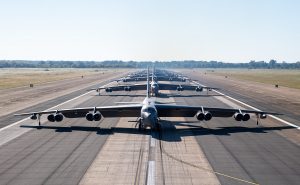
Over the next decade, the U.S. Air Force wants to start necking down to a bomber force of two fleets--76 re-engined and upgraded Boeing [BA] B-52s and at least 100 Northrop Grumman [NOC] B-21 Raiders. "We've got to get to a two bomber fleet as quickly as possible," Air Force Lt. Gen. David Nahom, the service's deputy chief of staff for plans and programs, told a Mitchell Institute for Aerospace Studies' Aerospace Nation virtual forum on July 14. In prepared…














